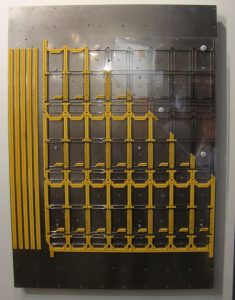Japan made cutting rules
now spreading worldwide
For flat bed die cutting rules there are many options to choose from such as cutting rules made in Japan, Europe and Asia. Currently Japanese cutting rules are very popular overseas.
I went on a trip to Switzerland to learn more.
Flat bed die cutting rules have a special characteristic that those for other manufacturing uses do not have. It can be bent to any angle without heat while maintaining sharpness. Among them, mirror finished cutting rules made in Japan are especially getting popular worldwide.
Here in Switzerland, the Japanese made cutting rules are widely used for very long-runs of high quality folding cartons for confectioneries and tobacco. These packages require preciseness and durability not only for cutting rules but also cutting plates and die boards because they are die-cut at a high speed.
On-site operators evaluated the mirror finished cutting rules as follows:
1) Long-lasting because of less cutting resistance by low die cutting pressure
2) Less paper dust due to sharp cut
3) Effective for laminated packages
Besides the difference in steel between domestic and overseas cutting rules, the biggest difference is the method of processing the blade edge. Overseas cutting rule makers use a shaving cutting work method, while Japanese mirror finished cutting rules employ a grinding work method. Some of the characteristics of ground (sharpened) cutting edges is that it cuts precisely, finely and smoothly. However, the process needs a lot of attention and it leads to lower production efficiency and higher production cost. Rational Swiss employees evaluated that mirror finished cutting rules are a great deal and are worth more than the price they pay. They also said, “They have great value for the money, that’s Japan quality.” (see the image below: a cutting die for cigarette packaging using mirror finished cutting rules)
Recently the number of gourmet supermarkets inside Japanese train stations providing international fine food is increasing. We have more opportunity there to see chocolates and other confectioneries imported from European countries. I didn’t expect that packages coming all the way to Japan are produced by Japanese cutting rules!

A cutting die for cigarette packaging using mirror finished cutting rules





